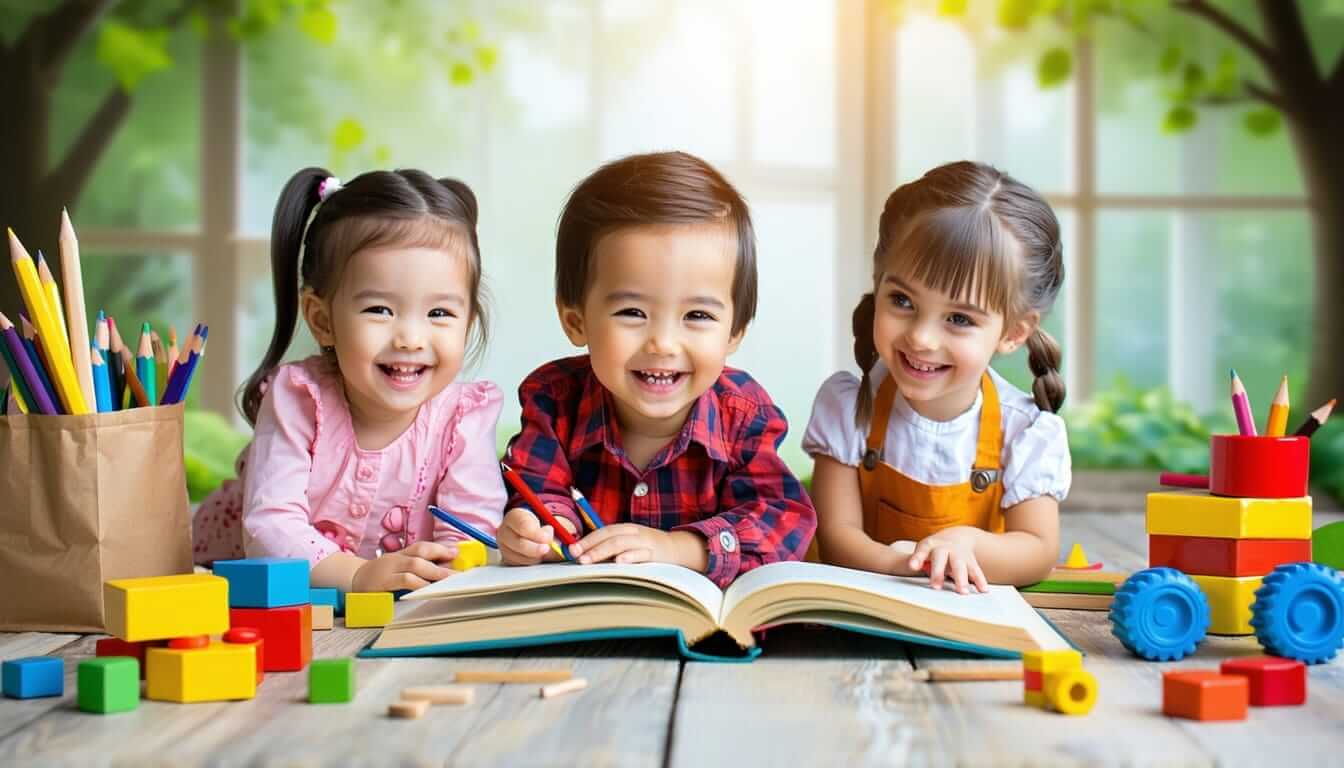Understanding Stress in Children
Stress isn’t always the bad guy many people think it is. For kids, it can show up in lots of different ways. Knowing the types of stress and how they affect your child can really help you in supporting them to keep their chin up and stress in its place.
Types of Stress in Kids
There’s more than one kind of stress that kids deal with:
| Type of Stress | What’s It About |
|---|---|
| Positive Stress | It’s like a little nudge kicking in before something big, like an exam or a performance. |
| Chronic Stress | This hangs around longer, sometimes weeks, caused by stuff like bullying or family troubles. |
| Traumatic Stress | This hits hard after tough events like accidents or violence, messing with their feelings big time. |
A bit of positive stress isn’t a bad thing—it helps kids build muscles for dealing with challenges, like a buzz before a big test or excitement before showing off at a recital. But chronic stress? It sticks around too long, usually from tricky situations like family fights or unfair treatment (KidsHealth).
Effects of Stress on Children
Stress affects kids differently, depending on what kind and how long it’s been around.
| Potential Effects | What’s Going On |
|---|---|
| Emotional Issues | Long-term stress may bring on anxiety, sadness, or irritability. |
| Behavioral Changes | Stress might have your kid acting out or pulling back; being aggressive, or having trouble focusing. |
| Physical Symptoms | Stress can make itself felt through headaches, tummy troubles, or not being able to snooze properly. |
Long after trauma, its impact can linger, making it crucial for you to lend a hand when your child’s world gets rocky. Creating that cozy corner of support helps them bounce back and learn to roll with the punches. Spotting and handling stress the right way lets you help your kid stay on top of life’s curveballs.
Check out our other pieces for more ideas on helping kids shine, like teaching children optimism and resilience and promoting positive self-talk in children.
Positive Stress and Resilience
Here’s the scoop: stress ain’t always your enemy. Sure, too much of it isn’t great, but there’s a little thing called “positive stress” that can really set the stage for growing those little champs into resilient individuals.
Benefits of Positive Stress
Ever noticed kids getting all jittery before a big test, a major game, or their first stage performance? That’s the good kind of stress we’re talking about. It’s short, a bit intense, but serves a good purpose:
| Benefit | Description |
|---|---|
| Motivation | This kind of stress kicks kids into gear, helping them zero in on what they need to do. |
| Goal Chasing | Acts as a driving force pushing them to chase down their personal and school goals. |
| Lesson Time | Offers a chance to figure out how to face challenges head-on and learn new tricks. |
| Coping 101 | Helps kids build the toolkit they need to tackle bigger life hurdles later on. |
When kids have the right kind of support during these moments, they learn to roll with the punches and come out stronger. This experience is the backbone for a future full of resilience.
Building Resilience in Children
Resilience isn’t about never falling; it’s about bouncing back and charging forward. Equip your child with smart strategies and see them breeze through tough times. Here’s how you can help:
-
Fostering a Growth Mindset: Knowing that they can get better with time and effort makes kids unafraid of taking on challenges. Dive into activities and conversations that push this mindset.
-
Chatting Up Positives: Teach your child to big themselves up! Nip those negative self-thoughts in the bud with personalized pep talks and affirmations that scream “I got this!”
-
Reward and Reinforce: Give a little nudge with a reward system. Kids love incentives! Rewarding their push to try and keep going sparks joy and grit.
-
Be the Model: Model the way to deal with stress. Show them it’s okay to breathe deep, share feelings, and solve problems together. They’ll learn from your lead.
Introduce these everyday tactics to actively support your child’s path to becoming resilient and positive-minded. Want to dive deeper into these ideas? Peep our guides on teaching positive thinking and nurturing a growth mindset.
Managing Stress in Children
Parental Role in Stress Management
Hey, parents! You’re the unsung superheroes when it comes to helping your kiddos deal with stress. Your involvement is a game-changer that boosts their ability to handle whatever life tosses their way. Start by having those heart-to-heart chats about what’s bugging them—sometimes they just need to talk it out to feel better. Your home should feel like a safe haven, where they can let loose about their worries without any judgement.
When your child is dealing with “good” stress, like getting ready for a class presentation, cheer them on to do it all by themselves. It’s a great way to build their resilience and self-confidence. Now, if we’re talking about stress that’s sticking around, like family changes or problems at school, that’s when you step in with stable support. Show them you’re there, and you’ll help make some order out of the chaos. Check out more handy tips at teaching children optimism and resilience to strengthen their emotional IQ.
| Stress Type | What’s Going On? | What You Can Do |
|---|---|---|
| Positive Stress | Short-lived and growth-inspiring. | Support their independence and self-prep. |
| Chronic Stress | Keeps dragging on due to relentless issues. | Be there consistently and find those stress triggers. |
| Traumatic Stress | Comes from major events, like accidents. | Reassure them and help process it all. |
Strategies for Coping with Stress
Got a kid dealing with stress? Time to share some survival hacks they’ve gotta know:
-
Mindfulness and Chill-Out Techniques: Teach ’em to take those deep, calming breaths or sit for some meditation. These tricks ground them right in the moment. For more cool ideas, see teaching children mindfulness for a positive mindset.
-
Positive Vibes Only: Show your child how to switch negative thoughts with some good ol’ positivity. It’s amazing what “I can do this!” can achieve. Get some pro tips from our guide on promoting positive self-talk in children.
-
Get Moving: There’s nothing like busting stress levels with some physical fun. Whether it’s playing outside or a fave sport, these activities make those happy hormones dance!
-
Arts and Crafts: Whether it’s doodling, music, or jotting thoughts on paper, these creative outlets can help kids express what they’re feeling. Give them the space to explore their thoughts in their special way.
-
Keep it Steady: Kids thrive when there’s a routine. It’s like building a little world where they know what comes next and can prepare. Learn about this in our talk on fostering a positive mindset in children.
-
Talk It Out: Let your kid know it’s always okay to share what’s on their mind. Whether it’s good or bad, having an open vibe helps more than you think.
By sharing these strategies, you’ll have your kid taking on stress like a champ. You’re not just guiding them through tough times; you’re giving them the tools to become strong, confident adults ready to conquer future battles. More on this journey at positive mindset and stress management in kids.
Promoting a Positive Mindset
The Power of Positive Thinking
Helping your kids embrace positive thinking is crucial for their growth. It’s not about pretending everything’s perfect but more about seeing the good in every situation. This way of looking at life encourages kids to see the bright side instead of focusing on the storm clouds. Studies have shown that having this mindset helps manage stress better and comes with a bunch of health perks, like feeling happier and healthier (Mayo Clinic).
Teaching them to turn negative thoughts into positive ones takes practice. It can help cut down on the harsh self-talk and bring about self-love, making it easier to tackle life’s daily twists and turns. You can find value in trying out activities that spread the power of positive vibes, like checking out positive thinking activities for children.
| Positive Thinking Tricks | What’s It About? |
|---|---|
| Flipping Negatives | Change “I can’t do this” to “I’ll give it my best shot.” |
| Mantras of Positivity | Repeat uplifting lines like “I am capable and strong.” |
| Thankfulness Diary | Make it a habit for your kid to jot down what they’re grateful for every day. |
Benefits of Optimism
Encouraging your kids to look on the bright side can really boost their toughness and help them handle stress. Children who learn to think optimistically often form stronger bonds and feel better living their day-to-day. Doing mental workouts to boost their sunny-side-up perspective can actually train their minds to be tough cookies (Big Life Journal).
The perks of a positive outlook include:
- Bouncing Back: Kids who look at life on the sunny side tend to bounce back from adversity.
- Building Bridges: A cheerful attitude helps them make and keep friends.
- School Smarts: Positivity can lead to sharper focus and tackling school challenges head-on.
Helping your child polish their optimistic lens can be as simple as teaching them about optimism and resilience and chatting about keeping hope alive during tough times. This strategy not only feeds their positive mindset but also helps them face life’s bumps with confidence and poise.
Developing a Growth Mindset
Importance of a Growth Mindset
Helping kids develop a growth mindset is a real game-changer. It sparks their love for learning and gives them the guts to tackle new things head-on. Kids who think this way often end up doing better than those who feel stuck and get back on their feet faster when things don’t go as planned. It’s the difference between seeing tough stuff as a chance to learn instead of something that’s just in the way.
How you talk to your kids matters big time. Giving credit for trying rather than just the final prize makes a huge impact on how they learn and grow. There’s some solid evidence showing that when parents focus on how their kids are learning, not just what they’ve learned, it builds a real growth mindset. It gets them to see that sticking with it and hard work is what brings success.
| What You Say | What It Means | What It Does for Kids |
|---|---|---|
| “You worked so hard” | Highlights their effort | Boosts their grit and toughness |
| “Great job on the test” | Focuses only on outcome | Can lead to fear of messing up |
Encouraging Effort and Persistence
Keeping kids interested in trying hard and not giving up helps build that growth mindset everyone’s talking about. Try setting up some kind of reward system that gives props for making progress. Think about something like “Brain Points” to keep them pushing forward and coming up with smart strategies as they deal with hurdles.
Books and movies where characters overcome struggles are worth their weight in gold. Talking about these stories lets your kids see just how important it is to keep going and how different people deal with problems. It works wonders for showing them persistence and strategy in action.
Also, getting your kids to think about how they think is really useful. Push them to mull over what went right and what didn’t when they face issues. Chatting about what they learn from their goofs and sticking points is a big step in the right direction for growing that importantly mentioned mindset. Check out further ways to do this by looking at things like teaching kids optimism and resilience, or encouraging them to keep a good attitude when things get tough.
Practical Techniques for Positive Mindset
Mindfulness and Relaxation
Getting your kid into mindfulness and relaxation is a huge step towards them handling stress and rocking a positive mindset. Imagine tackling stress like a pro with something as simple as belly breathing—taking those deep breaths that fill up the tummy and calm the storms. This trick helps them relax and boosts their oxygen intake, sort of like recharging a mental battery (UNICEF). Then there’s this neat idea called guided visualization where kids can create their little happy place in their minds—a personal retreat from all the hustle and bustle (UNICEF).
Here’s a handy table to lay out these mindfulness hacks and what they do:
| Mindfulness Technique | What it’s About | Perks |
|---|---|---|
| Belly Breathing | Deep breath-in, breath-out thing | Chills out anxiety, amps up relaxation |
| Guided Visualization | Dreaming up a mellow spot | Gives a stress-free sanctuary for the mind |
| Loving-Kindness Meditation | Focuses on good vibes | Boosts social bonds and generosity |
Getting into these habits can really make a difference in how your child feels emotionally and their overall mindset.
Encouraging Kindness and Gratitude
Sprinkle some kindness and gratitude in their lives, and you’ll see a nice, shiny positive outlook blossoming. Encourage your kid to sprinkle kindness like confetti—whether it’s a sweet gesture for a buddy or getting involved in community do-gooding. Turns out, loving-kindness meditation is linked to better health and happiness, even after just a short while (Big Life Journal).
Also, have them jot down those nifty “awe moments” when they spot something cool or beautiful around them. It’s all about seeing the brighter side and feeling better about themselves and their surroundings (Big Life Journal).
Set up a gratitude jar so they can drop notes of thanks whenever something good pops up. This little act encourages a thankful heart and a sunny outlook.
Try weaving these mindfulness tricks, relaxation tips, kindness gestures, and gratitude moments into your kid’s daily grind. It’s a fantastic way to help build a positive mindset and support them in getting really good at managing stress. For more ideas on how to boost your child’s mindset, check out our posts on positive thinking activities for children and teaching children optimism and resilience.




